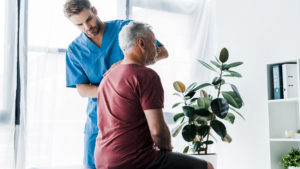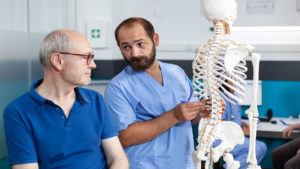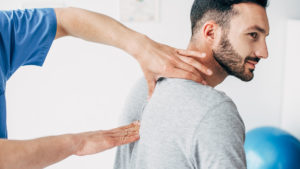Lower back discomfort affects countless people every day. It interferes with work, sleep, and basic activities like getting dressed or walking. If you’ve been searching for how to help lower back pain, you’re not alone. Fortunately, there are reliable ways to address this issue—both at home and with professional care.
This guide from Portland Wellness Care covers practical solutions, signs that call for a doctor’s visit, and how chiropractic and wellness-based therapies can help restore mobility and comfort.
What Helps Lower Back Pain Go Away?
Finding lasting relief starts with identifying the cause. Temporary flare-ups may improve on their own, but when the pain lingers or worsens, it’s time to explore more targeted solutions.
Some of the best approaches include:
-
Targeted exercises to strengthen core and lumbar muscles
-
Chiropractic adjustments to correct alignment and reduce pressure
-
Massage therapy to relax tight muscle groups
-
Postural improvements during work, driving, and rest
-
Stretching routines guided by a physiotherapist
-
Heat or ice therapy depending on the nature of your discomfort
-
Walking to maintain circulation and prevent stiffness
What to Do for Lower Back Pain That Won’t Go Away?
Pain that doesn’t improve within 10–14 days may indicate something more than a strained muscle. You should consider seeking professional care, especially if you notice:
-
Discomfort while bending or lifting
-
Sharp pain radiating down your leg
-
Numbness or tingling in your lower body
-
Pain that worsens with rest or inactivity
These could be signs of nerve involvement, disc issues, or spinal misalignment. At Portland Wellness Care, we offer chiropractic treatment for lower back pain tailored to your symptoms and medical history.
Can a Chiropractor Help With Lower Back Muscle Pain?
Yes—chiropractors can help with lower back muscle pain, especially when it’s caused by misalignment, overuse, or muscular imbalance. A gentle spinal adjustment can relieve pressure, improve mobility, and reduce inflammation in the affected area.
Our chiropractic team in Portland uses evidence-informed methods to safely address muscle tension and underlying dysfunction—often combining adjustments with physiotherapy and massage for a complete recovery strategy.
What Is the Best Way to Treat Lower Back Pain?
There’s no one-size-fits-all answer, but the most effective plans typically involve:
-
Assessment – Understanding what’s contributing to your discomfort
-
Manual therapy – Adjustments and muscle release work
-
Functional rehab – Exercise and movement re-education
-
Lifestyle changes – Ergonomics, posture, and self-care routines
The best way to treat lower back pain is to combine these approaches under the guidance of a qualified provider, rather than relying solely on medications or short-term fixes.
How to Ease Lower Back Pain at Night?
Discomfort that flares up during rest is frustrating and often tied to poor sleeping posture or an unsupportive mattress. Here’s how to reduce it:
-
Sleep on your back with a pillow under your knees
-
Side sleepers should place a pillow between their knees
-
Choose a medium-firm mattress that supports your spine
-
Avoid sleeping on your stomach, which can cause strain
-
Try gentle stretching before bed to release tension
If you’re experiencing lower back pain while sleeping on your side, try placing a firm pillow between your knees and aligning your shoulders and hips.
How to Relieve Lower Back Pain From Sitting All Day?
Extended sitting puts pressure on the discs and muscles in your lumbar region. You can reduce the impact with:
-
Standing or stretching every 30–45 minutes
-
Using a lumbar support cushion
-
Keeping your feet flat and knees slightly above hip level
-
Practicing seated stretches like hip flexor releases
-
Engaging your core muscles while seated
If your lower back hurts from sitting too long, visiting a chiropractor can help improve joint function and provide ergonomic tips for your daily routine.
Can Walking Help Lower Back Pain?
Yes, walking is beneficial for lower back pain, particularly when done regularly and mindfully. Here’s why:
-
It activates spinal stabilizers, helping them stay strong
-
It improves blood flow to soft tissues and joints
-
It reduces muscle tension in your back and hips
-
It helps your body flush out toxins that accumulate from inactivity
Start with short walks and work your way up, paying attention to posture and pace. If walking aggravates your pain, consult a provider first.
What Are the Best Stretches to Relieve Lower Back Pain?
Stretching can reduce tension, but not all movements are ideal for every type of pain. The safest and most effective stretches include:
-
Knee-to-chest stretches
-
Pelvic tilts
-
Child’s pose
-
Piriformis stretches
-
Hamstring releases
-
Hip flexor lengthening
However, avoid deep forward bends if your pain involves disc issues or sciatica. A physiotherapist at Portland Wellness Care can help you find the best stretching routine for your needs.
What Causes Lower Back Pain to Come and Go?
Recurring pain often comes from mechanical or postural imbalances that haven’t been corrected. For example:
-
Sitting with a rounded spine
-
Lifting without engaging your core
-
Sleeping in unsupported positions
-
Wearing shoes without proper arch support
-
Skipping strength and mobility training
Identifying these patterns and correcting them—through therapy and lifestyle changes—can reduce or eliminate recurring symptoms.
How to Know If Lower Back Pain Is Muscular or Spinal?
While both can feel similar, here are some differences:
Muscular:
Spinal or Nerve-related:
-
Sharp or burning sensations
-
May radiate to legs or feet
-
Involves numbness or tingling
-
Doesn’t improve with stretching alone
A chiropractor can evaluate your condition and determine whether your discomfort is rooted in the muscles, discs, or nerves.
Why Does Lower Back Pain Get Worse After a Chiropractic Adjustment?
While uncommon, some clients report temporary soreness after an adjustment. This is usually due to:
-
Increased motion in previously stiff joints
-
Minor inflammation as your body adjusts
-
Overactivation of muscles that haven’t been used correctly
This type of reaction is often short-lived. If you feel worse after chiropractic care, let your provider know. They can modify your treatment or include recovery techniques like ice, massage, or active rehab.
What’s the Fastest Way to Fix Lower Back Pain?
If you’re looking for the fastest way to fix lower back pain, focus on addressing both the symptoms and the source:
-
Apply ice or heat based on whether you’re dealing with inflammation or muscle tightness
-
Visit a chiropractor for a gentle spinal adjustment
-
Use targeted stretches and core engagement
-
Avoid positions or movements that irritate the area
-
Stay active, but don’t overdo it
Most importantly, don’t ignore recurring pain—early intervention can prevent long-term issues.
Why Choose Portland Wellness Care?
At Portland Wellness Care, we provide lower back pain relief in Portland through:
-
Chiropractic adjustments that address the root cause of dysfunction
-
Massage and manual therapy to release tension and restore motion
-
Physiotherapy for strength, mobility, and injury prevention
-
A whole-body, integrative approach that blends traditional and alternative care
We understand that every person’s pain is unique. That’s why we offer individualized treatment plans designed to help you move better, feel better, and regain your independence.
Conclusion
Lower back pain can overcomplicate your life, but multiple therapies offer relief and respite. Portland Wellness Care offers the help you need to get back to living and leave pain in the past. No matter what causes your lower back pain, we will work with you to find the right treatment including alternative options that are more affordable and less dependent on medications or surgery. Call today and schedule an appointment.










